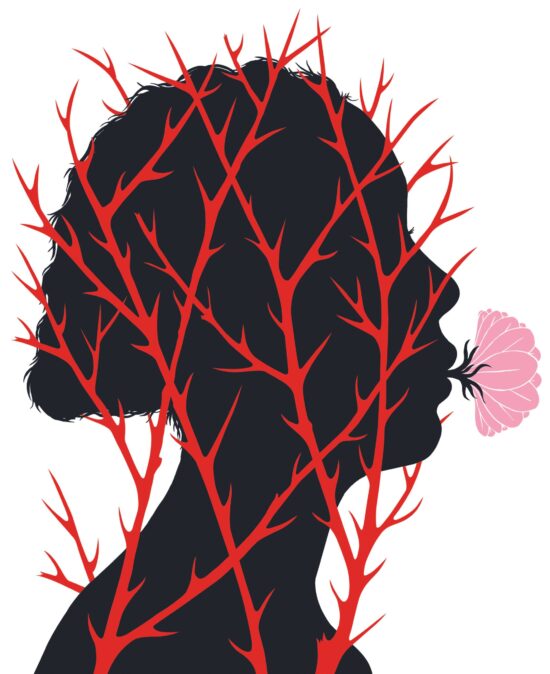Hate Crimes
Informing Policy to Deter and Heal

Hear the term “hate crime,” and it’s sadly easy to conjure an array of chilling images. A KKK cross-burning; racist graffiti; the 2019 shooting rampage in a San Diego synagogue by a gunman who had been posting vitriolic slurs against Jews and Muslims online. Over the past several decades, at least 45 states and the federal government have enacted either stand-alone laws or sentencing enhancements focused on crimes motivated by bias against another’s race, religion, sexual orientation, disability, or other characterizations. There is wide recognition that victims of hate crimes—including their larger community—suffer trauma that is severe and long-lasting.
According to Shirin Sinnar, JD ’03, professor of law and John A. Wilson Faculty Scholar, there is insufficient understanding of the effects of hate crime laws on victims and perpetrators. Do they deter the committing of hate crimes? Does an emphasis on incarceration divert resources and miss an opportunity to help victims recover from the trauma of these crimes? And what about hate crime survivors who are afraid to report crimes to police, sometimes out of a fundamental distrust of the legal system? Some 10 students joined Sinnar in a new policy practicum Assessing Alternative Approaches to Hate Crimes over the winter and spring quarters to delve into these questions.
“Twenty years ago hate crime laws were debated as issues that pitted civil rights perspectives against free speech concerns. With increasing attention to mass incarceration, there’s been a shift in thinking within the civil rights community, and I’ve not found a lot of research that is answering the questions I want to answer,” says Sinnar. “Are hate crime laws serving their objectives? What kind of laws could serve as models? This class is not about advocacy; it’s about what are the right questions.”
Sinnar has partnered with the Brennan Center for Justice at New York University School of Law for the practicum, and center experts have been assisting students with research and will co-edit the report, which is expected in early summer. In early March they held a “convening” session, with financial support from Stanford’s Center for Comparative Studies in Race & Ethnicity and the Clayman Institute for Gender Research, which brought in academic, nonprofit, and former government officials to discuss different programs addressing hate crimes in the U.S. and the U.K.
Students have discovered deep differences of opinion about how to address hate crimes with policy, even within the same civil rights organizations. “I understand the impulse to send a message with our hate crime laws—these crimes are serious,”
observes Tyler L. Bishop, JD ’20, who continued on with the class in spring quarter. “I’m not saying putting harder penalties on hate crimes is wrong, but I’m asking, do they solve the problem?”
The students have also explored alternatives to sentencing enhancements, including expanding trauma support and financial compensation for victims, training in communities to encourage bystanders to reject hate speech, as well as restorative justice. “Sometimes as law students we somewhat mechanically go to the law to fix an issue, but that’s not always the answer. The law is not always accessible to communities,” says Arielle Andrews, JD ’21.
“A key question is whether the criminal justice system can assemble the tools to retain the expressive message of hate crimes laws while de-linking that message from
lengthening prison terms.”—Shirin Sinnar, JD ’03, Professor of law and John A. Wilson Faculty Scholar
For example, since the 1970s a number of communities have experimented with programs in which, in lieu of charging certain crimes or sentencing individuals to prison, a prosecutor or judge may offer victims and perpetrators an opportunity to work out alternative forms of accountability in a mediated environment, often under the auspices of a nonprofit organization specializing in restorative justice. Some organizations include hate crime cases within such programs.
The point is not to absolve perpetrators from responsibility for the crime, but to require them to repair the harm they committed through actions that survivors believe will help restore their lost sense of safety. For example, instead of jail time, some victims may request that the perpetrator perform service that benefits the victim’s community.
“Even as the public has become re-sensitized to the humanity of those ensnared in the criminal legal system, those who commit hate crimes are still commonly thought of as despicable, irredeemable individuals who deserve severe punishment,” observes practicum participant Benjy Daniel
Mercer-Golden, JD ’21 (BA ’15). “But these are also vulnerable and oppressed people: the poor, people of color, people who lack education, people with adverse childhood experiences, people with addiction issues or mental illness, juveniles.”
The effectiveness of these programs in a hate crimes context has not been rigorously documented, however, and there are unanswered questions. For example, how do these programs prevent resistant perpetrators from revictimizing hate crimes survivors and avoid imposing additional demands on marginalized communities? “There is a lot of work to be done,” says Sinnar. “A key question is whether the criminal justice system can assemble the tools to retain the expressive message of hate crimes laws while de-linking that message from lengthening prison terms.” SL
